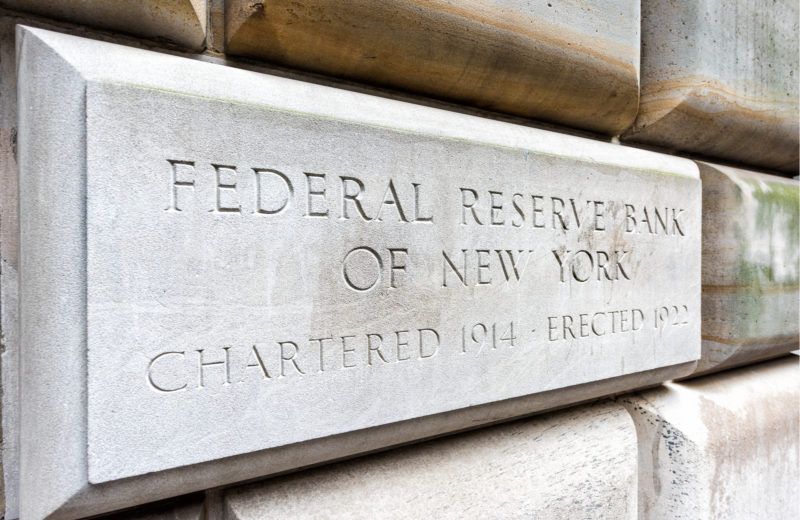Small Business Lending Is Not the Fed’s Job

During times of economic crisis, should emergency loans to small businesses be made by the Department of Defense, Department of Education, or Department of State?
I suspect most Americans would say “No” to all three. If needed, emergency loans to small businesses can be made by the Treasury or Small Business Administration. It’s not the job of the Departments of Defense, Education, or State.
It’s also not the job of the Federal Reserve.
As the nation’s central bank, the Fed’s mission is to manage the money supply to best promote employment, stable prices, and a stable financial system. In that role, it must occasionally act as the lender of last resort to the financial system. But, over time, the Fed has increasingly blurred the line between its monetary and regulatory policies.
Case in point is the Fed’s newly proposed Main Street Lending Program. The plan is for the Fed to make loans to banks, which will in turn relend the money to small and medium-sized businesses. The Fed claims such actions are authorized under Section 13(3) of the Federal Reserve Act, which allows the Fed to lend to non-bank companies in “unusual and exigent circumstances.” However, Section 13(3) specifically requires that lending be “for the purpose of providing liquidity to the financial system.” There are three reasons the Main Street Lending Program might not meet this requirement.
First, “providing liquidity to the financial system” has traditionally meant lending only to non-bank financial companies with direct ties to U.S. banks. In 2008, for example, the Fed lent to AIG on the grounds that its failure would disrupt the banking system. The Fed maintained that lending to other non-banks, such as General Motors, was beyond its purview. As a result, GM and other non-banks without direct ties to U.S. banks had to rely on other sources for funding, such as the Treasury’s Troubled Asset Relief Program (TARP).
Perhaps the Fed believes it will satisfy the liquidity provision requirement since it will not be lending directly to non-banks but instead lending to banks who will relend the funds to small businesses. According to the Fed’s proposal, however, the Main Street Lending Program is being established “to support lending to small and medium-sized businesses.” So the stated “purpose” of this program is to lend to non-banks, not to provide liquidity to the financial system. It thus seems clear that, in its current form, the Main Street Lending Program would violate the liquidity provision requirement of Section 13(3).
Second, it’s not clear there is currently a need for emergency liquidity in the financial system or specifically in the small business lending sector. Indicators of financial stress, such as the Treasury-Eurodollar (TED) spread and the Financial Stress Index from the Office of Financial Research (OFR), are elevated to around their 2001 levels, but they remain far below the heights of 2008.
Perhaps Fed officials would maintain there is a specific problem of illiquidity in the small business lending market, but this does not seem to be an issue given the minor increase in credit spreads. If the Fed believes this market is illiquid, then it should offer evidence this is the case. Otherwise, authorizing the Main Street Lending Program would effectively mean that every recession is a financial crisis. Even minor fluctuations could justify subsidized lending to specific financial markets. Defining “unusual and exigent” in this way is almost certainly too broad.
Third, lending under 13(3) requires not only a general lack of liquidity in the financial system but also proof of illiquidity from any business receiving funds. Prior to lending, Section 13(3) requires “evidence that such participant […] is unable to secure adequate credit accommodations from other banking institutions.”
Under the Fed’s proposal, any participating borrower must attest that “it requires financing due to the exigent circumstances.” However, admitting a business “requires financing” seems a lesser standard than being “unable to secure adequate credit.” Is this minor attestation all the “evidence” that is needed to fulfill a requirement so important that it was written into the Federal Reserve Act? Surely Congress had something more substantive in mind.
The Fed should reconsider the Main Street Lending Program, which would extend the Fed’s reach into areas never intended by Congress. The Department of Defense should defend, Education should educate, and State should carry out foreign policy. The Fed should conduct monetary policy and regulate member banks. It should not allocate credit to non-banks without direct ties to the banking system.
If subsidized loans to small businesses are required, they should be offered by the Treasury or Small Business Administration. It’s simply not the Fed’s job.










